“Fort Apache is not actually the real name of the isolated ghetto that lies four miles to the north of the centre of Buenos Aires. A journalist first coined the phrase after a shoot-out in front of the local police station in the early 1980s and it has stuck ever since. Most of the 30,000 inhabitants of the 22-block labyrinth are descendants of indigenous Indians from the interior of Argentina and bordering countries. It is a self-contained community, with its own set of codes, and a shocking crime rate. Built in two stages, the project was originally part of the Ongania dictatorship’s plan for the eradication of shanty towns in the 1960s but, later, during preparations for the 1978 World Cup, the military government, worried about security and the image Argentina would portray to the rest of the world, rounded up delinquents, placing them, out of sight, in the Ejercito de los Andes estate, a name that has long been forgotten.”
– Neil Clack, The Independent
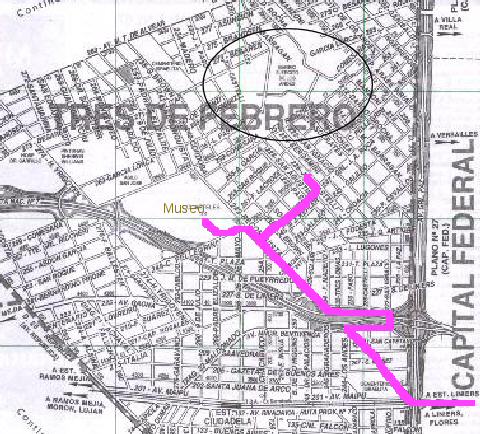 Buenos Aires –
Buenos Aires – Most people, including locals, have never been to the barrio of Ciudadela, a part of the Tres de Febrero “suburb” to the west of Buenos Aires. It’s likely that other than in connection with Carlos Tévez, star soccer player who grew up there and now plays for England’s
Manchester United team, or perhaps from the evening crime news, they’ve barely considered the place’s existence. My friend Barbara, who is working on a jewish travel guide, wanted to take a quick look at the two jewish cemeteries in the barrio, along with a visit to the national army museum,
Museo Histórico del Ejército Argentino. I suggested that on a Saturday it was likely that both cemeteries were closed (and they were), but the museum sounded like it could be interesting, so off we went.
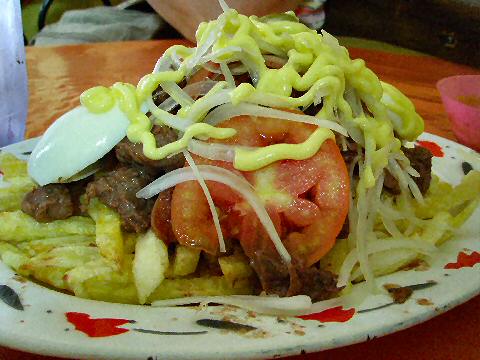
We of course, had to fortify ourselves for the walk, so having gotten off the train in Liniers, we took a walk around the
Bolivian food markets, and then stopped at a little place called Kaiki, where we split a gut-busting platter of
pique a lo macho, charred bits of beef mixed with french fries, hot dogs, hard-boiled eggs, and the entire thing covered in mayonnaise – the sort of thing that a drunk fratboy might mix up late at night home from the bar, but a staple of Bolivian casual cooking. And then, the adventure started, which, thankfully, turned out not to be overly adventurous, since neither of us knew about
Fuerte Apache, not far off our trail, considered one of the most dangerous spots in Buenos Aires, if not all of Argentina. On the map, we enter from the lower right in Liniers, head up the diagonal of Av. Reconquista, looping under the highway – a young lady escorted us there to show us the way, meanwhile warning us repeatedly that we really probably didn’t want to go over there, it was filled with
choros (which means
mussels, but is
lunfardo, or street slang, for
thieves) – but that’s a standard warning that
gringos get from locals anytime they go anywhere off the beaten track, we didn’t think much of it – silly us. As it turned out, it was a perfectly pleasant walk, the part of the barrio we were in is relatively safe and quiet, at least during the day, and people greeted us pleasantly as we walked.
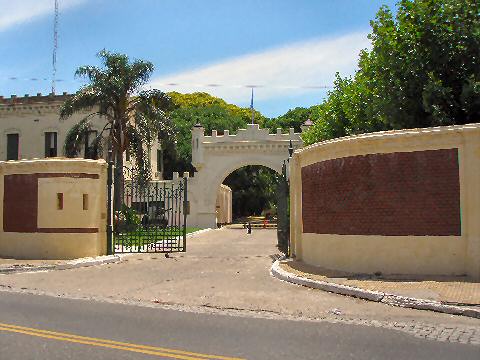
In short order we found ourselves at the entrance to the museum (it opens at two in the afternoon – don’t head out earlier, and unlike us, take either the 1 (from Liniers station) or 161 (from Plaza Italia, though a very, very long ride – 2 hours) bus which will leave you right in front. Though the young soldier at the gate said they weren’t open until 2:30, he let us in, just letting us know that the buildings on the grounds wouldn’t be open for another half hour.
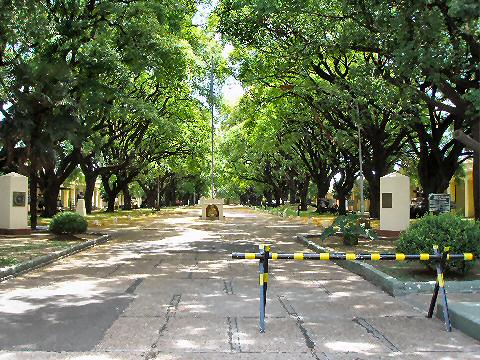
And the grounds are beautiful – tree lined, well-maintained – it’s a different world from that outside the walls. The one staff member on duty for the day, as it turned out, came over and told us that because it’s the off-season, and the weekend, and he was the only one working, he was only going to open one building out of the half dozen – he picked the “Missions of Peace” building, though we would have been more interested in one of the more historic halls….
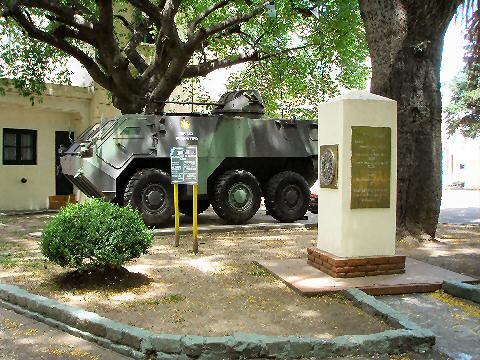
We wandered the grounds for half an hour looking at tanks…
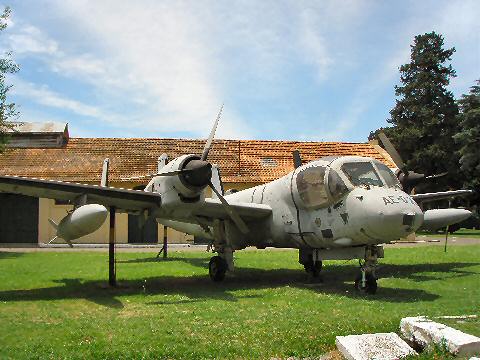
…and search and rescue aircraft.
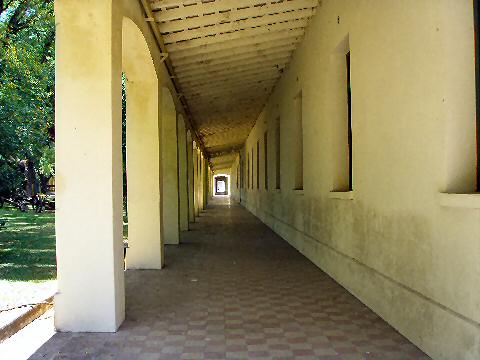
While most of the dingy yellow buildings on site are reasonably well maintained…
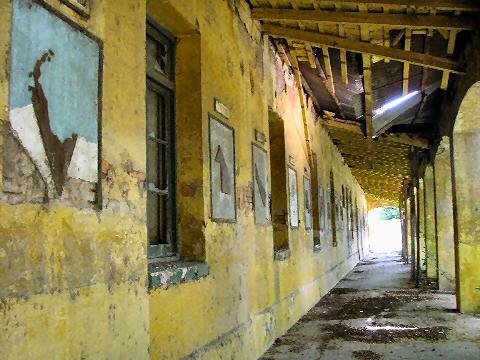
…not all of them are.
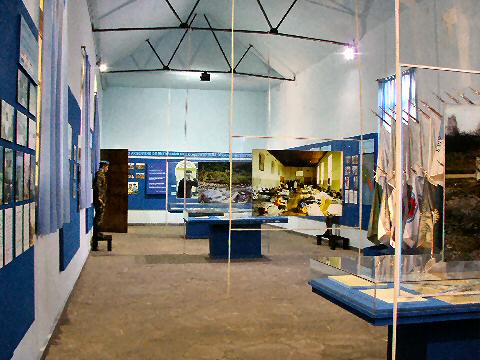
We headed back to meet the young man at the Missions of Peace hall at 2:30… he showed up around 2:50, apologetic, but he’d decided to go have lunch. Inside are various wall displays showing off many of the missions that the Argentine Army has participated in with the United Nations – photos, descriptions, various memorabilia.
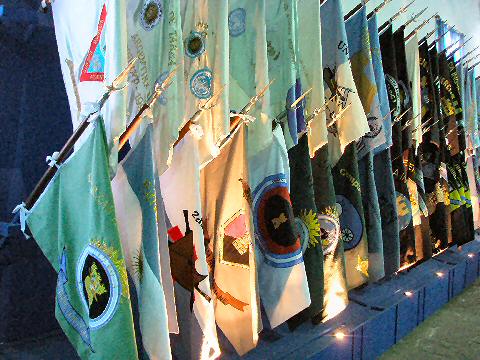
…also a very colorful display of the mission flags. Meanwhile, the young man started up a computer that blared music into the room along with flashing a “slide” show on its screen from the missions. The choice of music was, to say the least, a little odd, starting with Europe’s
Final Countdown and pretty much headed south from there.
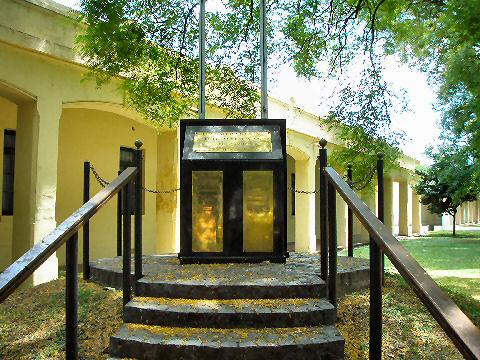
We ended our self-tour (during the week, when fully staffed, a guide in each building apparently gives tours regularly throughout open hours) with a look at the memorial to those who’ve fallen in the line of duty during U.N. missions – eight of them, based on the plaques.
Now, leaving, we weren’t quite sure where to go next – figuring that the other cemetery would be closed as was the first down by the Liniers station, we didn’t head there – good move since it would have taken us right through the western edge of Fuerte Apache (the circled area on the map). Our Guia T indicated that the 124 bus had a stop in front of the museum and would take us back to Recoleta – turns out not – and apparently not for some time, as no one we asked had any recollection of the 124 ever running through the neighborhood (and online research shows a completely different starting point for the line). But we’d spotted an interesting looking church a couple of blocks away and walked over to take a quick look…
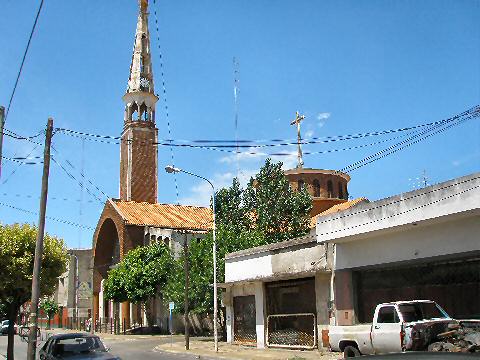
…from the outside, St. Anthony’s is just interesting…
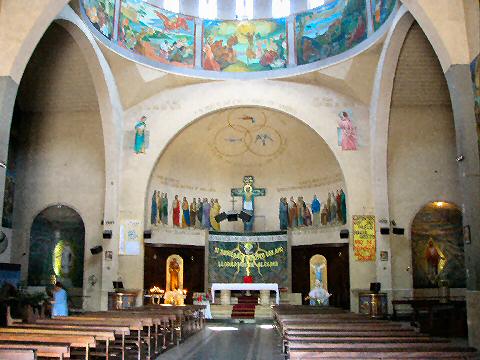
…but inside, worth the quick visit – the whole place is decorated in hand-drawn cartoons of various events that, in many a church, might be illustrated by traditional iconography and paintings by one artist or another. We left the church after a few minutes, asked about buses, the 161 turned out to have a stop just a block away, we waited for a short while, got the bus, and it carted us to Plaza Italia – a mere two hour trip as it wound its way through virtually every western barrio and then on into the northern ones before heading in along Av. Cabildo. Next time, were there to ever be one, the #1 back to the Liniers train station and then the train back in – likely just a half an hour.
By the way, I’m not following Barbara to any more offbeat locations without a little research….


















Not fair! We returned unscathed after a lovely tour of provincial streets we’ll never take the time to see again!
But it was a little creepy to find out afterwards just how close we were to Fort Apache…
We did indeed, though I have the feeling some of it was sheer dumb luck and timing on our part….
Actually, the bus ride part was kind of interesting, we did get to see areas we’ll probably never bother to go back to.